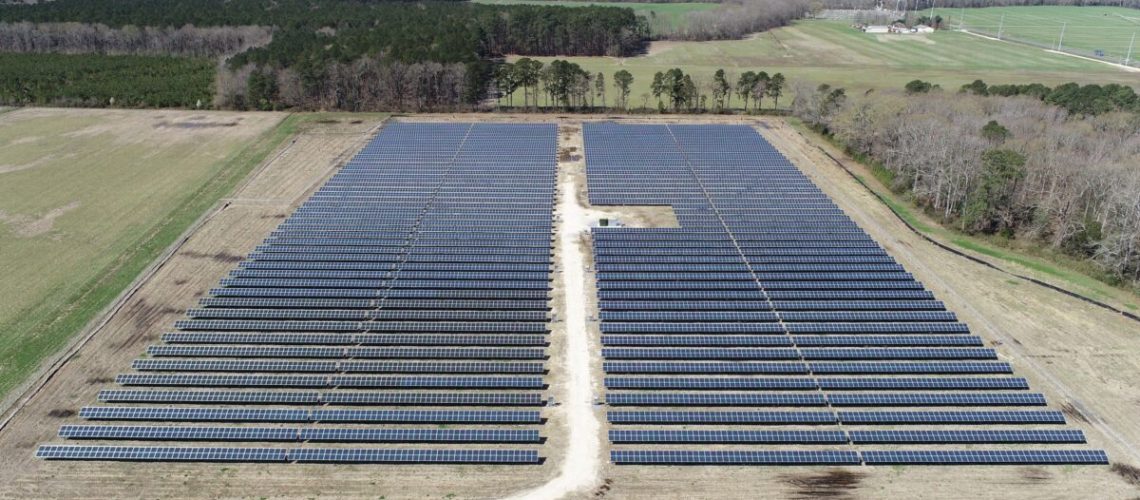Recent studies show the many benefits of community solar, and to keep it on an upward trajectory, the Coalition for Community Solar Access encourages growth in third-party programs.
With an estimated 6.6 GW of community solar installed across the United States the nation has a long way to go toward achieving the Department of Energy’s target of 20 GW installed. Yet it is potentially achievable, according to recent reports.
A recent Wood Mackenzie report projects that cumulative installations could reach 14 GW by 2028, more than doubling the total in less than five years. Community solar is in early stages, with only 18 states and Washington D.C. having policies and programs that encourage its growth. The WoodMac reports points to strong markets like New York and Illinois that can serve as models for implementing a successful community solar program.
The National Renewable Energy Laboratory (NREL) released a seminal report that found that community solar has the technical potential to reach nearly one terawatt of capacity. This would be enough energy to serve more than 53 million households and more than 300,000 businesses in the U.S. that cannot access rooftop solar.
One of the major benefits of community solar is it opens access to customers that may not have a suitable roof or financial situation for rooftop solar. It allows residents, businesses, organizations, and municipalities to subscribe to a portion of a solar asset’s electricity generation to receive credit on their electricity bills for the power it generates.
The NREL report acknowledges that market, economic and policy constraints mean that the actual number potentially served by community solar would be much less. At its annual summit, the U.S. Department of Energy’s (DOE) National Community Solar Partnership (NCSP) challenged the community solar industry to meet a target of 20 GW of community solar by 2025, enough energy to power 5 million households and create $1 billion in energy savings for subscribers. The NREL report concedes that using the 20 GW target set by the NCSP as a more realistic goal.
According to the NREL report, “if all technically viable potential community solar is deployed, it could save customers billions of dollars on their electricity bills, serve tens of millions of LMI households, generate billions of dollars in grid resilience and grid service values, drive billions of dollars of economic benefits into host communities, and support hundreds of thousands of jobs.”
If the U.S. were to achieve the NCSP 20 GW target, that would power the equivalent of 5 million households and create $1 billion in energy savings for subscribers. To meet this goal, the Coalition for Community Solar Access (CCSA) advises that policymakers, regulators and stakeholders from across the country must work together, and quickly, to enable third-party community solar programs, by far the largest source of community solar deployed on the grid today.
“These announcements further demonstrate the immense potential of community solar and its ability to build a more equitable, affordable, and modern electric grid while harnessing both small and large resources to reach our goals,” said Jeff Cramer, CEO of CCSA. “The community solar industry and billions in private capital stand ready to build capacity right now to meet this potential. But to unlock the tremendous promise that community solar holds, we need state policymakers to open new markets and expand existing ones.”
Annual installation volumes have been about 1 GW for three years in a row, and 8% average annual growth is expected through 2028. To meet the goals set by the federal government and the industry, however, more enabling state legislation must be passed, according to the CCSA. And utilities can encourage growth by viewing third-party developers as partners in deploying clean energy, not opposition.
As the community solar capacity serving residential customers has rapidly increased, so has the share of community solar serving low- to middle-income (LMI) subscribers. The numbers of LMI subscribers has grown from 2% in H2 2022 to 10% in H2 2023, with the cost to subscribe LMI customers declining 30% year-over-year. According to NREL’s report, community solar reduces the cost of electricity for subscribers. NREL estimates that if the U.S. achieves the 20 GW of community solar capacity by 2025, the cumulative benefits would be substantial:
- Community solar could reduce subscriber electricity costs by approximately $110 million to $330 million per year.
- LMI households served would range from 210,000 to 630,000.
- $50 million to $160 million per year would be generated in grid resiliency and service value.
- Economic benefits driven into host communities could range from $20 million to $160 million per year.
- 7,000 permanent jobs would be supported.
- These targets and projections underscore the role of community solar in providing affordable and sustainable energy solutions, particularly for underserved communities, while also contributing to economic development and job creation in the renewable energy sector.
A ramp-up in community solar installations will be due in part by federal funding. According to the Wood Mackenzie report, the community solar industry will begin to experience the impacts of the Inflation Reduction Act as soon as this year, and LMI subscribers will benefit as credit adders begin to be awarded.



